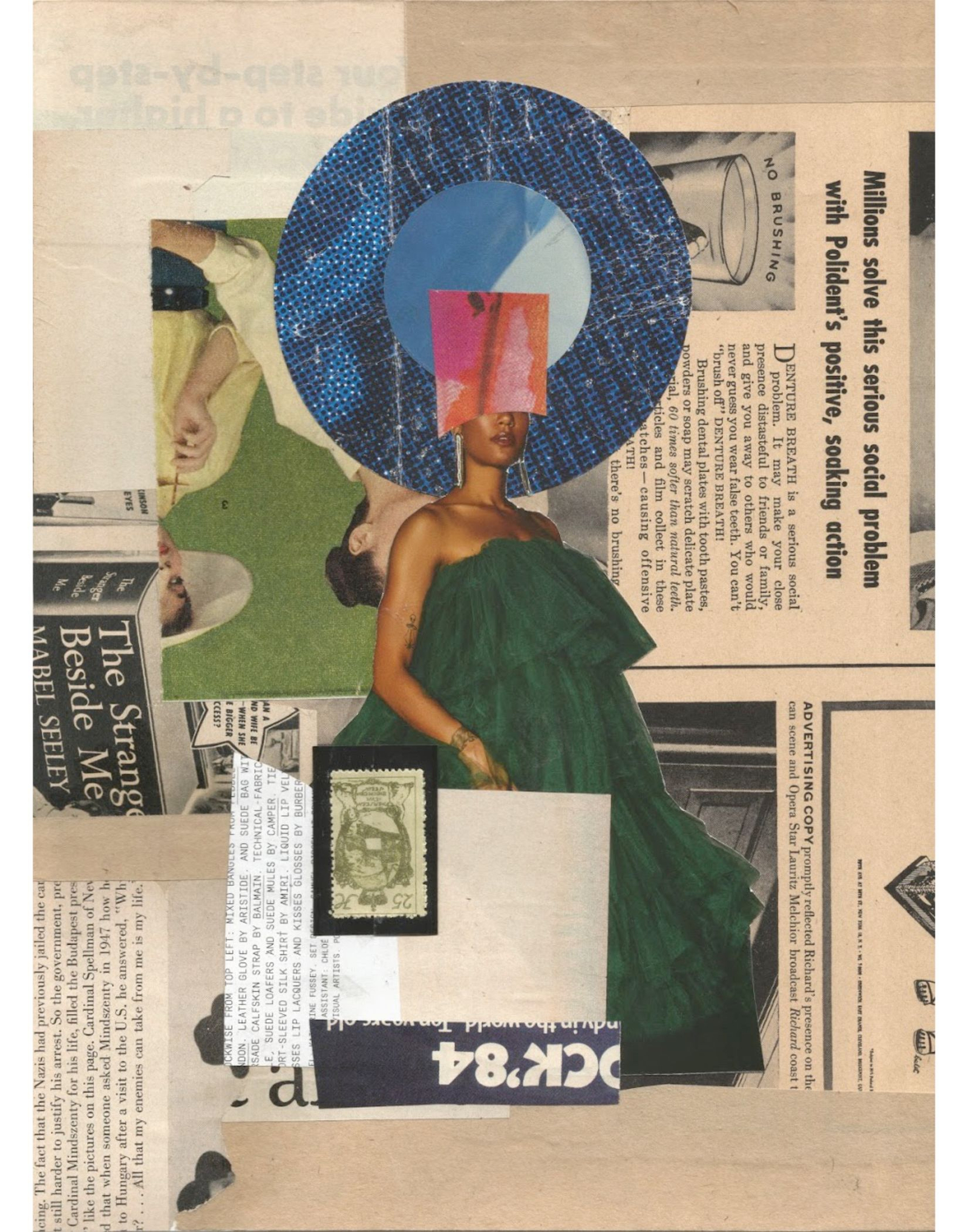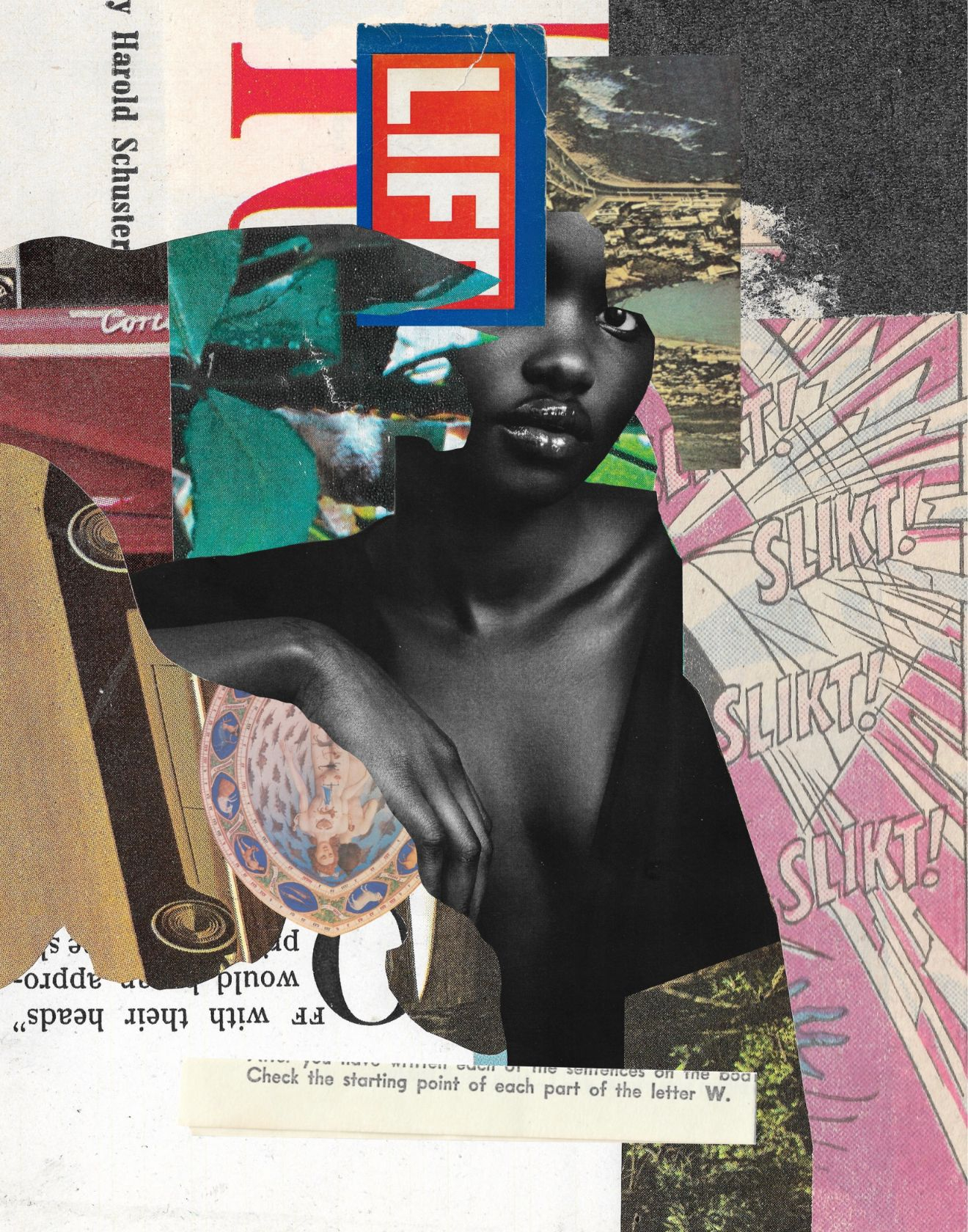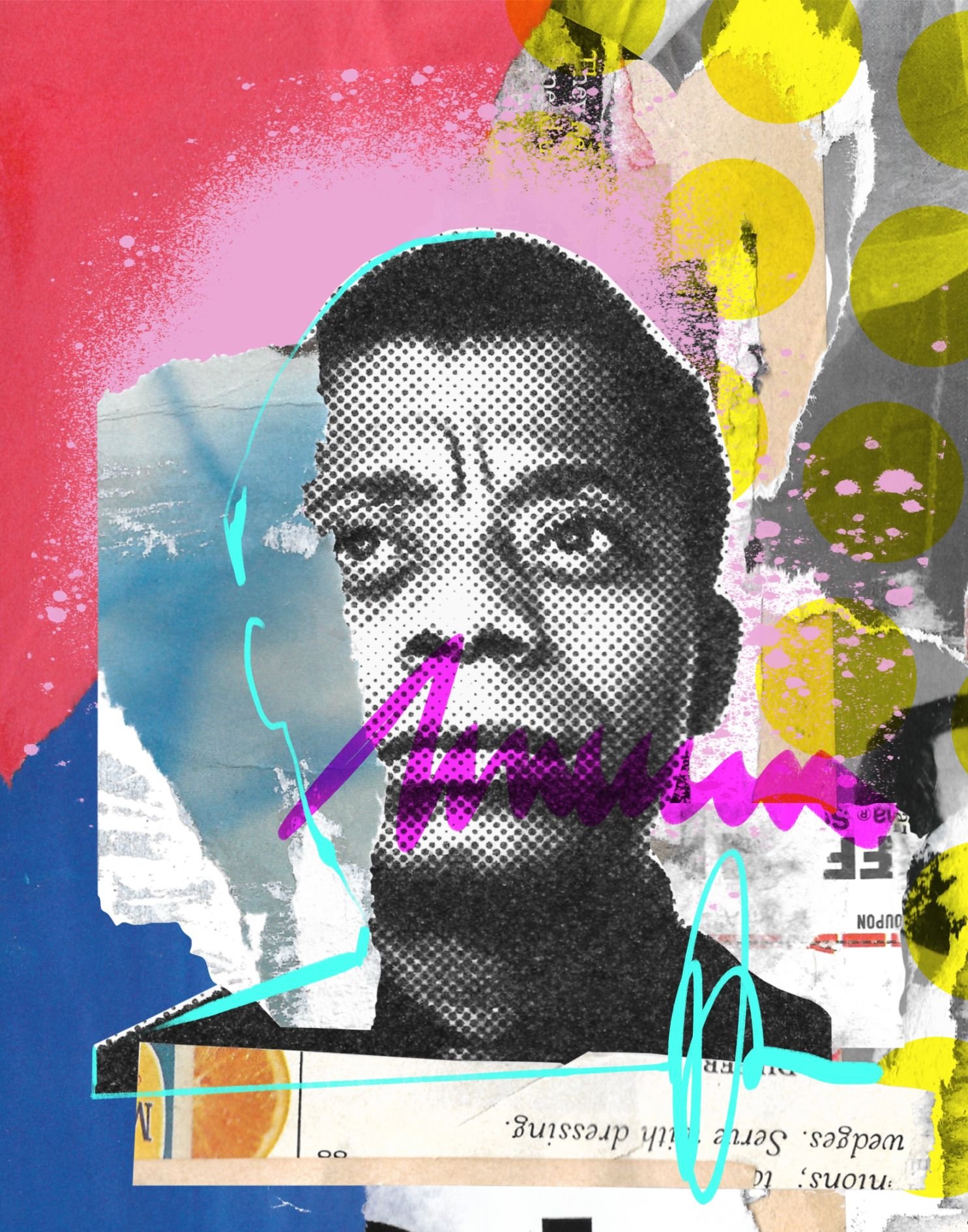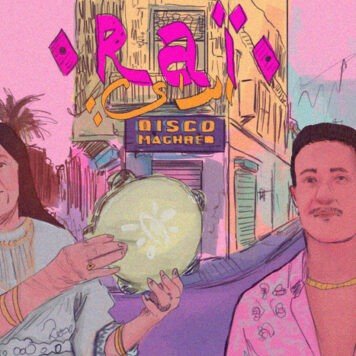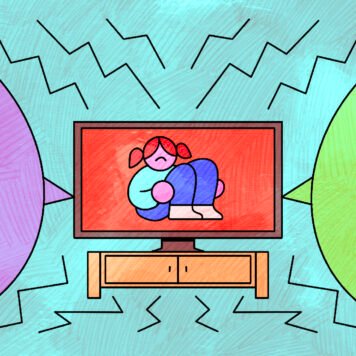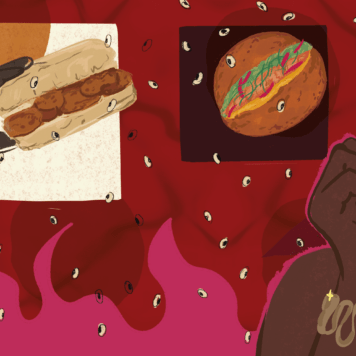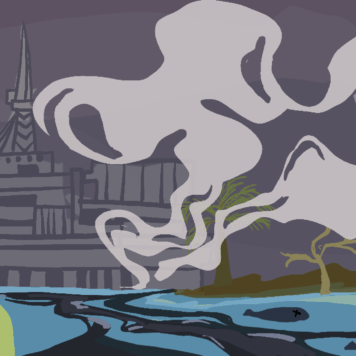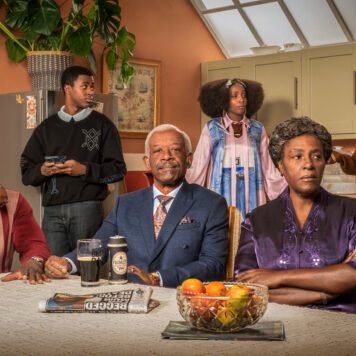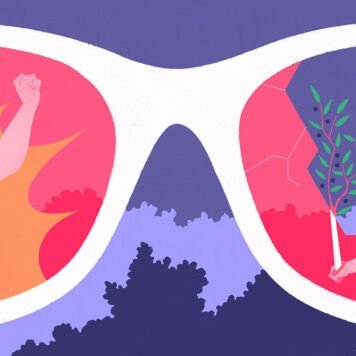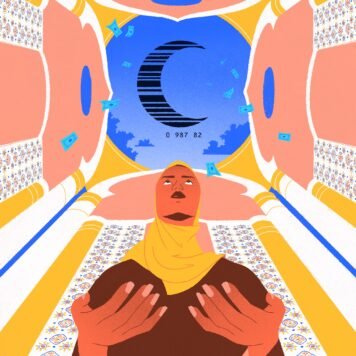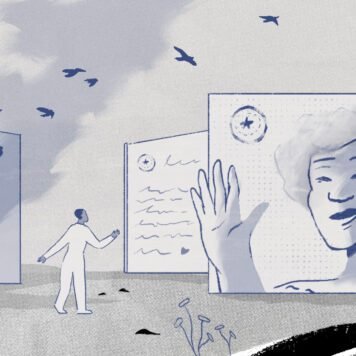This week we chatted to Aaron Marin (aka NEUTOKYO), an American artist born in 1978 who lives and works in Upstate New York. The nom de plume, NEUTOKYO, is a nod to his formative years spent working and traveling in Japan. NEUTOKYO’s collage-based work confronts and challenges preconceived notions of beauty, power, and intelligence by fusing anthropology, art, and fashion. His explicit use of the Black figure serves to examine the ways in which gender and culture shape the interactions, relationships, and experiences of the lives of contemporary Americans.
What are some of the biggest inspirations behind your work?
The Black figure – and associating it with beauty, power, intelligence.
The poetry of Langston Hughes, Nikki Giovanni, Maya Angelou, Gwendolyn Brooks. I have been reading books only written by non-white authors, and primarily women authors – simply because most of my reading, regardless of the genre, has been authored by straight white males. I learned a long time ago, as a military intelligence officer, about the power of words and how they program your mind for good and bad.
Music. Music is critical. I lived a year without playing music, or least not having ready access to it. During my freshman year at a military university, we were not allowed to play music or have CDs in our possession and it really sucked. Although there were ways around it – contraband CDs, and the advent of Napster and Limewire usher in MP3s that alleviated the pressure of having to hide a case of CDs – you couldn’t freely play your music the way you wanted to. I learned then the true power of music – how it can move you, comfort you, inspire you. Recently I have been listening and discovering a lot on Bandcamp Weekly and a lot of soulful house music with Deeper Shades of House.
My turning point in art was listening to artists being interviewed about how they saw the world, which in turn informed their artwork. I am primarily interested in seeing how non-white artists navigate space, especially in the realm of fine art. I am heavily influenced by the interviews and artwork of Kerry James Marshall, Arthur Jaffa, Theaster Gates, Mark Bradford, Mickalene Thomas, Amy Sherald, Julie Mehretu and so many more. I always look for artist interviews where they are talking about life.
I rewatched the PBS series EYES ON THE PRIZE about the Black civil rights movement in the United States. It is excellent and important to see. I started this year by watching that whole series – it is powerful stuff! I was determined to really go past making ‘pretty pictures’ and actually think about what I was making. I wouldn’t be here today, as an artist and Black man with all the opportunities and experiences I have had in my life, without the work and sacrifice of the people fighting against injustice. PERIOD.
What do you see is the power of collage?
Wow. I know for myself it has the power to heal – but maybe that is more a point to art in particular.
I came to collage after a bad divorce, losing a job, and my way (generally speaking) in life. I was first a photographer, but creating photographs reminded me of the life that didn’t exist anymore, and that was too painful at the time. Collage was a way for me to create art, using photographs in a manner that was healing to me and also strengthening and creative.
The images, words, symbols used in collage already exist – or at least our association with these things exist. Collage allows artists to abstract all those things (symbols/images/words) and re-contextualise them to create a new story. The work can be nuanced like a painting or simple, direct and in your face like a massive billboard. The beauty of all of this is that all you need is a pair of scissors, a glue stick, and some paper.
Does your location affect your work and what you create?
Always. I am not making the same art in Tokyo as I am in New York or Marrakech, mostly because I don’t have access to the same materials. The other reason is that I have all these other influences surrounding me; people speaking different languages, food, weather, customs… The art terroir of my life changes when the location changes. Frankly, I cannot and should not be making the same art. That is not to say that all the messages and ideas are completely changed, but they should be enhanced and matured by what I see, breathe, eat, walk, talk, sleep in.
Travel has greatly influenced my life and my outlook on the world. I am deeply humbled by the opportunity I had to see a small portion of it while I was working in the military – I definitely do not think the same before my travels as I do now, and it is for the better. In turn, my artwork has not been the same when I have travelled – a trip as small as from my house to the nearest cafe (pre-COVID) changes how I do art, that is magnified a thousand times more when I go to another country.
In light of the resurgence of Black Lives Matter across the world, what do you see as your role as an artist?
With respect to the Black Lives Matter movement – I don’t know, I am not sure that I buy that it’s a global movement per se. There were a lot of global issues going on at the same time, and the central theme seemed to be government corruption and abuse. Most of it is centered around police brutality and gross economic disparity. Those issues coupled with a pandemic, and the time of year, Summer, gave people the permission to protest.
Suddenly a lot of art became centered around Black identity, “Black” and “African” were ‘in’ again. There were and are many artists that were making Black-centric work prior to this for years, if not decades. Their work examined and continues to examine the nature of race and identity with respect to being Black.
Subscribe to shado's weekly newsletter
Exclusive event news, job and creative opportunities, first access to tickets and – just in case you missed them – our picks of the week, from inside shado and out.

I believe Nina Simone said that “the duty of an artist is to reflect the times” that they live in. I agree with that.
What is more interesting to me is not the art being made in conjunction with the energy of the recent global civil rights movement, but the art that is made once life returns to ‘normal’. What does the art look like AFTER? After the pandemic is over, and after certain concessions are made to quell the civil unrest, are people still hungry for change?
For me, the change in my art occurred after I became more adept at making my collages. The focus on my energy was less on understanding HOW to create, but WHAT I was creating. Then my conscious mind began to realise what my unconscious was already digesting, and what I always knew to be; there are not a lot of Black images in these magazines that I was cutting up. The Black image was almost always marginalised and pushed to the periphery and backgrounds of images. Nothing had changed since the days of old European oil painting masters, who occasionally put Black images in their work.
So I decided, after watching a great interview of Kerry James Marshall about his work, to not use European images in my work anymore. That was not my idea of “beauty, power, and intelligence” and I didn’t need to give that image of whiteness a platform in my artwork – because it simply didn’t resonate with me.
I believe the most important role of an artist is the same for anyone else: be honest with yourself and your work. That takes time for some, and for other artists, they know it right away. For me once I tapped into the ideas and thoughts that I knew to be true the work easily followed.
You’ve talked about the power of art as a healing process. How do you resonate with the idea that recovery is revolutionary?
I think it’s important to start off by agreeing on defining the two words, recovery and revolutionary. As we all know, words have meaning, and I want to make sure the meaning is the same for everyone before I talk about what these ideas mean to me.
Recovery has two definitions I really like, in this order;
- “the action or process of regaining possession or control of something stolen or lost.”
and,
- “a return to a normal state of health, mind, or strength.”
I take these definitions and make this –
Recovery is: “Regaining possession of a normal state of health (mind AND strength) that was lost or stolen”
So, then we take a look at the word ‘revolutionary’, it usually has images of war, civil unrest, ideologies battling each, Molotov cocktails, and the like.
But this definition is what I think of –
- “involving or causing a complete or dramatic change.”
True recovery MUST be revolutionary. That dramatic change comes in the thought of saying to yourself “Hey! You have permission to make this art!” or “Hey! You are beautiful and loved and go spread that love with your artwork!” or “Hey! Get off your ass and just play and have fun. Return to wonder and childlike innocence!”
But sometimes it’s hard to hear that voice that allows us, that guides to healing.
So we gotta make a drastic change – maybe it’s your friendship group, maybe it’s food, maybe it’s switching off the phone for a while.
What worked for me was getting really quiet – like Zen Buddhism meditation. Allowing the thoughts to come and pass through. I was able to do this in a corner of a coffee shop in Maine, on my off days from working in a local restaurant. Sometimes, I was able to get there sitting at my dining room table listening to music and feeling the heartache of a recent breakup. But in both situations, I was “regaining possession of my health, mind, and strength” and in the end, it was “a complete and dramatic change”.


